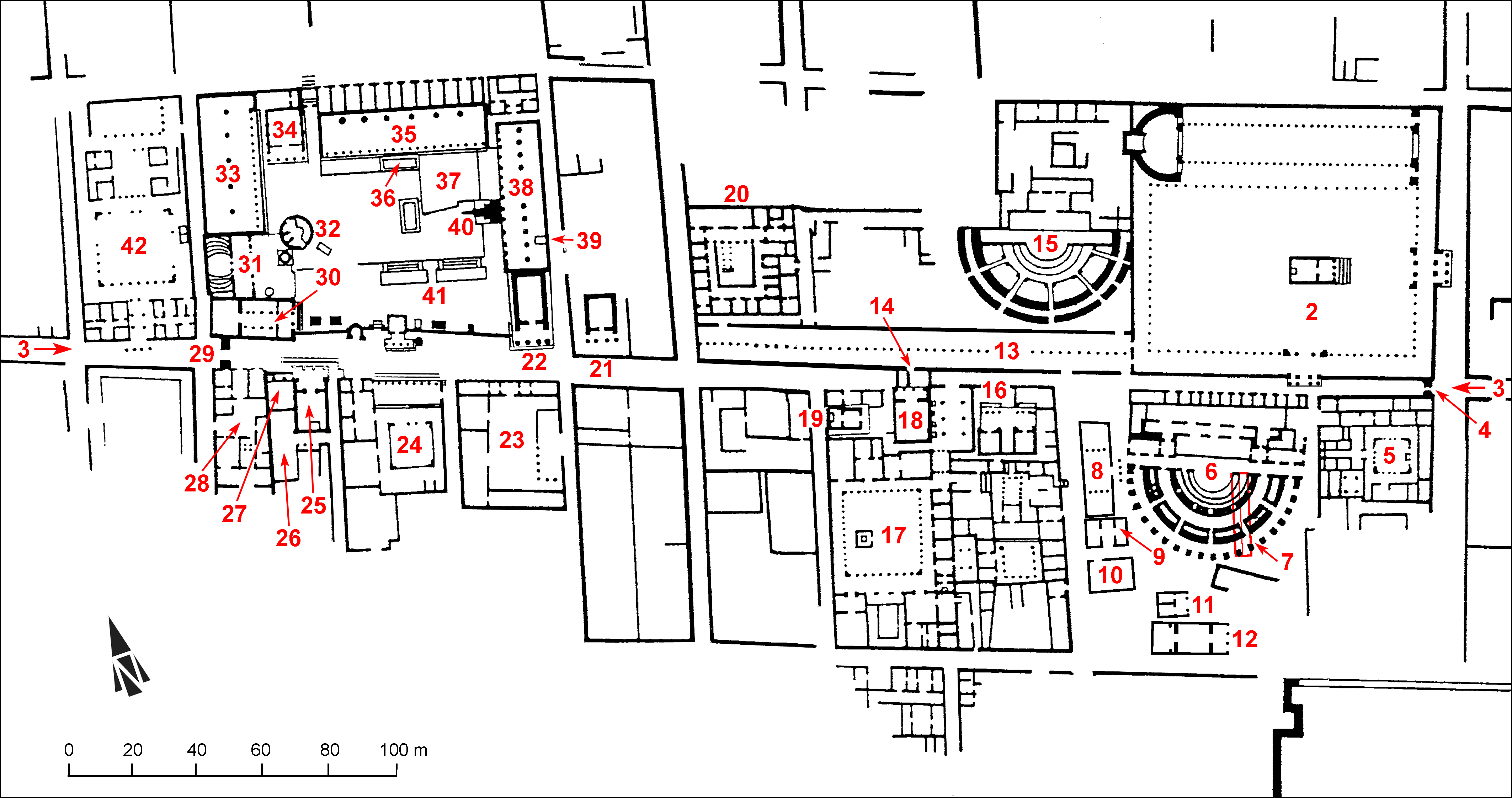EpiDoc XML:
IGCyr0004302
Trismegistos ID:
738100
Source description
Support: Fragment of a kylix, Attic black-glazed ware (dimensions not registered).
Layout: Scratched under the rim on the outer side.
Letters: 0.006. The 2nd letter seems more likely to be a san than a mu; the photograph shows a very strange ductus for the 4th letter, interpreted by Gasperini as the trident-shape letter.
Date: Perhaps sixth century BC
Findspot: Found in 1958 at Cyrene ➚: agora, in a sounding under the North-East corner of the West Stoa.
Place of origin: Findspot.
Last recorded location: Cyrene Museum, Storeroom of the Italian missions, A58 T1. Not seen by IGCyr team.
Text constituted from: Transcription from editor (CDL).
Bibliography
Gasperini 1967, p. 166, n. 6 (ph.) (= Gasperini – Arnaldi – Marengo 2008, p. 78 (ph.); IGCyr 000430 ➚. Cf. Marengo 2010, p. 20; Dobias-Lalou 2015, p. 70, whence SEG, 65.2030; Antonini 2016, pp. 45-46 and Dobias-Lalou, BE 2017.638.
Text
Apparatus
1: [---]+ας Χ: [---]ΑΜΨ[---] Gasperini 1967
French translation
Intraduisible.
English translation
Not usefully translatable.
Italian translation
Intraducibile.
Arabic translation
غير قابل للترجمه بشكل جيد
Commentary
If we follow Gasperini's interpretation of the fourth letter, it is the third occurrence in Cyrenaica of a trident-shaped letter. In IGCyr1101002 and in IGCyr0019202, it is used as a chi, whereas the cross-shaped chi was the most frequent in the region. Marengo 2010 has shown that this rare shape is of Rhodian origin. The letter before it might not be a mu and its shape fits a san perfectly. So we propose to divide those poor letters into a name end and a word (or name) beginning.
CC BY-NC-SA 4.0 Deed Attribution-NonCommercial-ShareAlike 4.0 International License.
All citation, reuse or distribution of this work must contain a link back to DOI: https://doi.org/10.60760/unibo/igcyrgvcyr2 and the filename (IGCyr000000 or GVCyr000), as well as the year of consultation.


